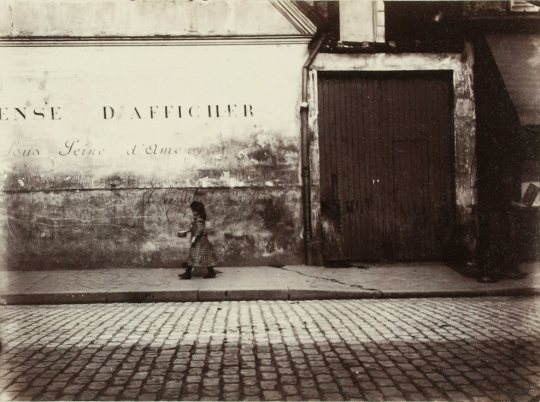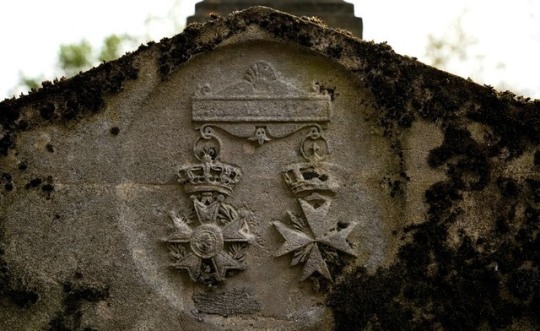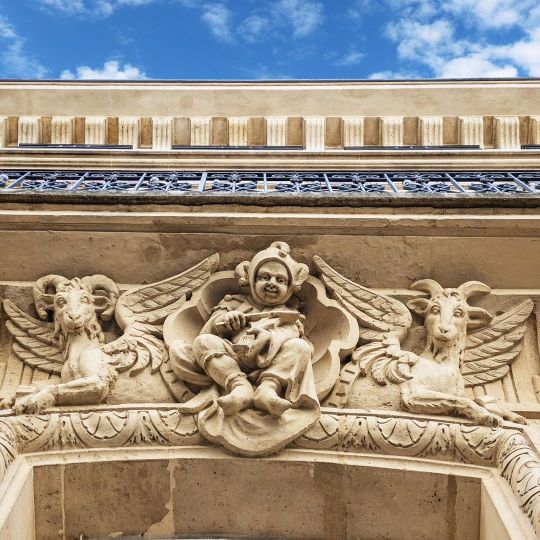#rue de la folie regnault
Text

#paris#france#75011#rue de la folie regnault#streets#people#kids#enfants#graff#graffiti#flop#tag#handstyle#streetart
7 notes
·
View notes
Photo

Emmanuel Pottier 60, rue de la Folie Regnault Paris 11° 1901
50 notes
·
View notes
Photo

Cimetière du Père-Lachaise, Paris - France
by Hervé Haracha
One of the hills of Paris, called Champ-l'Evêque because it belonged to the bishop of Paris in the Middle Ages, took the name of Mont-aux-Vignes in the twelfth century, for the cultures that one realized there. In 1430, a wealthy merchant named Regnault de Wandonne bought the estate to build an opulent house: a madness. This is the origin of the name of the current rue de la Folie-Regnault in the 11th arrondissement.
Two centuries later, the Jesuits acquired the land to make it a place of rest and recuperation. The house welcomes a few hours the young king Louis XIV came to attend on these heights to fighting during the Fronde. This event will give the place the name of Mont-Louis. But the most illustrious occupant was Francis of Aix de la Chaise (1624-1709), says Father La Chaise, confessor of King Louis XIV of France, who exerted a moderating influence on him in the fight against Jansenism. He remained there from 1675 until his death in 1709.
Mont-Louis was separated from Menilmontant Park by the chemin des Partants5.
Count de La Chaise, brother of the Jesuit father, gave many celebrations on the estate, which contributed to its expansion and embellishment. But in 1762, the Society of Jesus was forced to yield the land because of a debt of the father of Jacy. Over the years, the gardens were abandoned and the owners succeeded one another, to return on 9 Ventôse year XI to the prefect of the Seine, Nicolas Frochot, against the sum of 180,000 francs.
The cemetery in 1815 is an English park whose tomb of Héloïse and Abélard, here at the top right, is a goal of walk.
Following the closure of the cemetery of Innocents on December 1, 1780, late application of the law of 1765 which prohibited cemeteries in the city, Paris began to lack burial places.
Napoleon Bonaparte, consul, decreed that "every citizen has the right to be buried whatever his race or religion", regulating the case of the disbelievers, the excommunicated, the comedians and the poor.
On June 12, 1804, an imperial decree on burials definitively fixed the rules to be applied for the location and organization of cemeteries6.
At the beginning of the nineteenth century were created several new cemeteries outside the limits of the capital: the cemetery of Montmartre to the north, the cemetery of the East, the cemetery of Montparnasse to the south and, west of the city, the cemetery of Passy.
The prefect of Paris decreed the transformation of the 17 hectares of Mont-Louis into an eastern cemetery. The design of the cemetery was entrusted to the neo-classical architect Alexandre-Théodore Brongniart in 1803. As chief inspector-in-chief of the second section of public works of the Seine department and the City of Paris, Brongniart will draw the large axes in the form, for the first time, of an immense English garden, with rough alleys, provided with trees and plants with various species and edged with carved sepulchres. He will display funerary monuments of which only one will be realized: that of the burial of the Greffulhe family, in the neo-gothic style.
The cemetery was opened on May 21, 1804 (1st Prairial year XII), and the first burial, that of a five-year-old girl, Adélaïde Paillard de Villeneuve, daughter of a doorbell of the Faubourg Saint-Antoine, took place from the 1st Prairial or perhaps the 15th Prairial (June 4th) 7. It was followed by that of Queen Févez, died 615 rue Jarente June 18, 1804, (29 Prairial XII), wife of Valentin Robert, Bar-le-Duc merchant, and Gilbert's mother-in-law, Baron Dufour, chief editor of the Imperial Guard. It was originally intended for Parisians in one of the four arrondissements of the right bank (the 5th, 6th, 7th and 8th of the time), in a mass grave or in perpetual concession. But the cemetery did not have the favor of the Parisians, who were reluctant to be buried on heights, more located outside Paris, and in a neighborhood deemed popular and poor.
In 1804, Père-Lachaise welcomed only 13 graves. The following year, there were only 44, then 49 in 1806, 62 in 1807 and 833 in 1812. In 1815, there were still no more than 2 0008. To enhance the image of the cemetery, the prefect of Paris organizes the transfer of the remains of Héloïse and Abélard, as well as Molière and La Fontaine9,8.
It was enough: in 1830, 33,000 tombs were counted. The Père-Lachaise knew at that time five enlargements: in 1824, 1829, 1832, 1842 and 1850. These allowed him to go from 17 hectares and 58 ares (175 800 m2) to 43 hectares and 93 ares (439 300 m2) for 70,000 graves10, 5,300 trees, a hundred cats, many birds and 3.5 million visitors.
#cemetery#père-lachaise#cimitero#cimetiere#burial ground#cementrio#cemetry#cmentarz#grabmal#friedhofe#france#europe#paris#grave#tomb#stone#carved#funerary art#command#medal#gravlund#groblje#taphophile#taphophilia#death#sadness#memories#in memoriam#post mortem#memento mori
15 notes
·
View notes
Video
Sunset and twilight over Paris, 2019-02-17. Accelarated 300 times. . . . #ParisSunset #sunset #EiffelTower #paris #15secondsTimeLapse #ParisTwilight #ParisTimeLapse #TimeLapse #SunsetTimeLapse #Offenbach #beautifuldestinations #bestvacations #hellofrance #igersparis #instaparis #instatraveling #loves_france_ #loves_paris #merveillesdefrance #pariscartepostale #pariscityvision #parisian #parisjetaime #parisphoto #passionpassport #seulementparis #topparisphoto #travelandleisure #visitfrance @beautifuldestinations @bestvacations @hello_france @igersparis @loves_france_ @merveillesdefrance @paris_carte_postale @pariscartepostale @parisjetaime @passionpassport @super_france @topparisphoto @travelandleisure @paris.focus_on @paris @pariscityvision (at Rue de la Folie-Regnault) https://www.instagram.com/p/BuNHemhIq19/?utm_source=ig_tumblr_share&igshid=1rm399bq49hev
#parissunset#sunset#eiffeltower#paris#15secondstimelapse#paristwilight#paristimelapse#timelapse#sunsettimelapse#offenbach#beautifuldestinations#bestvacations#hellofrance#igersparis#instaparis#instatraveling#loves_france_#loves_paris#merveillesdefrance#pariscartepostale#pariscityvision#parisian#parisjetaime#parisphoto#passionpassport#seulementparis#topparisphoto#travelandleisure#visitfrance
2 notes
·
View notes
Photo

Diabolique lutin de la Folie Regnault (Rue de la Folie-Regnault - Paris XI)
#paris#picoftheday#weloveparis#parismaville#igersparis#instaparis#igparis#pariscityvision#parismonamour#thisisparis#architecture#architectureparisienne#architectureparis#paris11
0 notes
Text
Précisions sur les demandes de permis de construire portant à la fois sur la démolition et sur la construction des bâtiments (CE 12 février 2020, n°421949)
Précisions sur les demandes de permis de construire portant à la fois sur la démolition et sur la construction des bâtiments (CE 12 février 2020, n°421949)
En l’espèce, la société Le Toit parisien a déposé une demande de permis de construire portant sur la démolition de deux bâtiments, la surélévation d’un bâtiment existant et la construction d’un nouveau bâtiment sur une parcelle située au 40-42 rue de la Folie Regnault dans le 11ème arrondissement de Paris.
La Ville de Paris a demandé au pétitionnaire de produire des pièces supplémentaires par…
View On WordPress
0 notes
Text

2 notes
·
View notes
Photo

Rue de la Folie-Regnault, Paris 11e.
Avril 2017.
Retrouvez également Pixdar sur Flickr.
4 notes
·
View notes

